美國的房屋市場裡,有一大堆名詞和房型讓人眼花撩亂,但別擔心!今天我們要為大家帶來一個超完整攻略,帶你一次解開謎團!本文會逐一介紹美國常見的租房和宿舍房型,像是神秘的Studio、1B1B、2B2B、0.5B、Suite、Single、Efficiency等等,還有許多的專有名詞,像Full XL、W/D等等。
租房房型
Studio
Studio房型沒有特別的中文翻譯,可以稱為套房、獨立套房或單間公寓等等,是一種開放式的房型。這種房型特色在於,「將廚房、客廳和臥室融為一體!」並只在廁所設有獨立的區隔。在此種房型中,除了必需的隱私空間(例如浴室)之外,其他的生活功能區域如烹飪、娛樂、睡眠等都在同一個開放的空間內。
由於Studio的特點是省去了隔間,整個空間變得更加寬敞和開放,這對於想要充分利用有限空間的人來說,是非常適合的。然而,Studio的隱私性相對較低,生活的各個部分都在同一個空間進行,可能會讓一些人感到不適應,且煮飯時的油煙問題也是需要考慮的。
在美國,許多城市的核心區域,特別是一些高房價、空間密集的大城市(如紐約、舊金山等),Studio房型是非常常見的,對於許多學生、年輕的工作人士來說,是一個很好的選擇。
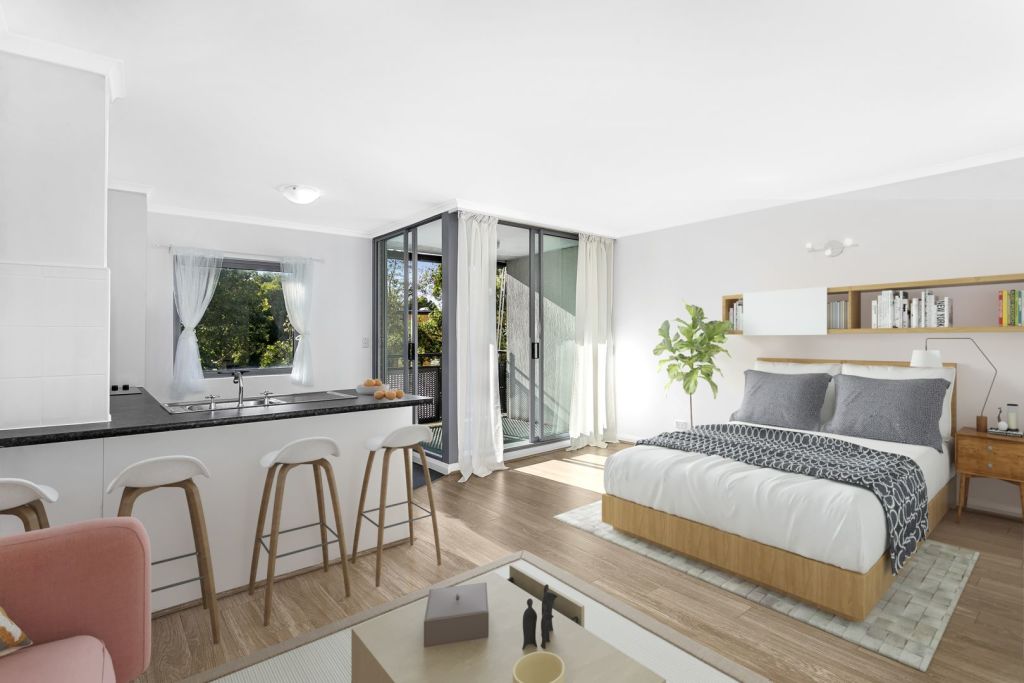
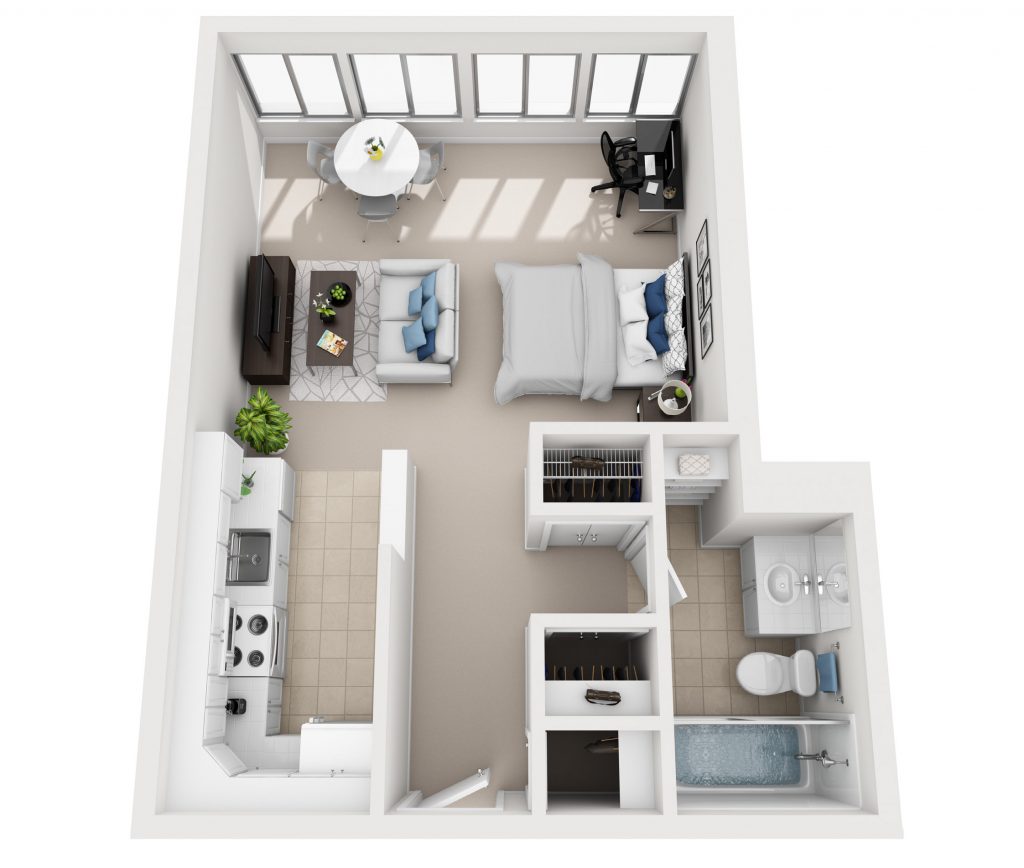
1B1B (One Bedroom)
有些人第一次在租房網站看到1B1B可能不知道什麼意思。(就像我)
1B1B(單臥室公寓)是一種常見的美國房型,這個名詞是由兩個”B”組成,第一個”B”代表Bedroom(臥室),第二個”B”代表Bathroom(浴室)。所以,1B1B實際上是指一個臥室和一個浴室的組合。這種布局通常還包括一個客廳、一個廚房和可能的額外儲存空間。
1B1B與Studio最大的區別,就是1B1B「臥室、客廳是獨立的區域!」,會有房門。與Studio相比,1B1B提供了更多的隱私性和空間的劃分,使得各種生活功能(如睡眠、烹飪、娛樂等)可以在不同的區域進行,而不會互相干擾。
這種房型比較適合單身人士或情侶,他們需要一些私人空間,或者需要一個額外的區域來接待客人。另外,1B1B整體的坪數通常也比Studio大,適合那些需要工作或學習空間的人,也有些人會將客廳再分租出去以節省房租。
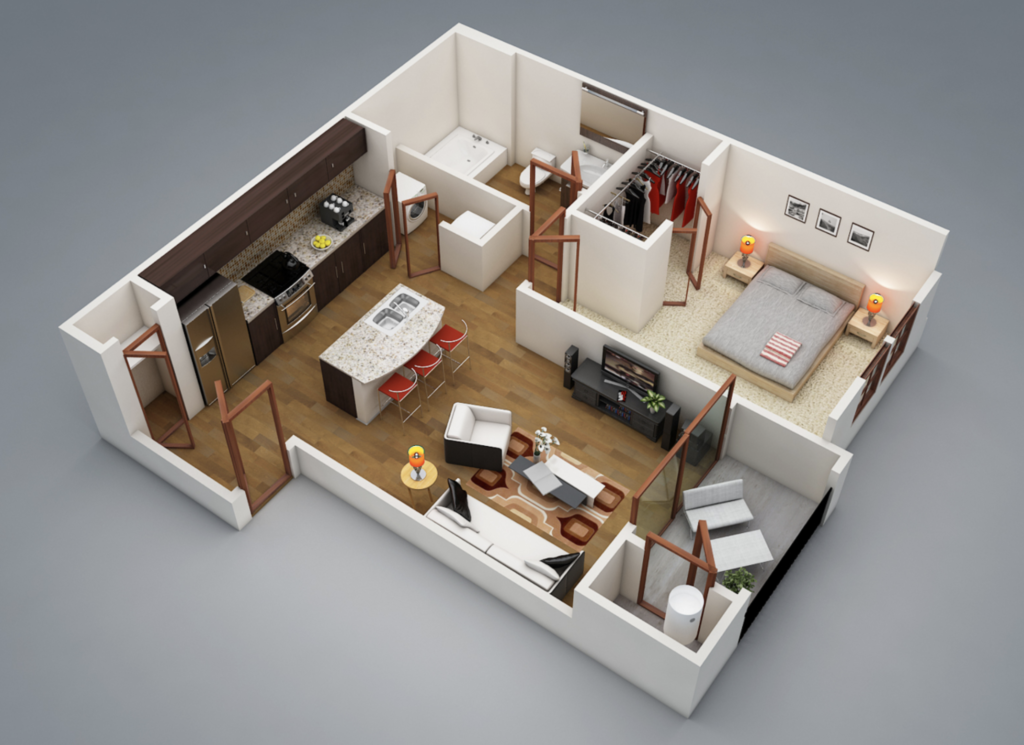
2B2B (Two Bedroom)
2B2B是指兩個臥室和兩個浴室的組合。這種公寓通常還會有一個獨立的客廳和廚房。
在2B2B的房型中,每個臥室都會有相應的浴室,這樣可以大大提高住宅的隱私性,每個住戶都可以在自己的臥室和浴室享受到自己的空間。另外,這種房型的客廳和廚房通常也比較寬敞,方便共享和娛樂。
這種房型非常適合有兩個或更多的室友一起租住,每個人都有自己的臥室和浴室,同時還可以共享客廳和廚房的空間。另外,這種房型也很適合小家庭,父母可以有自己的主臥,孩子可以有自己的臥室。
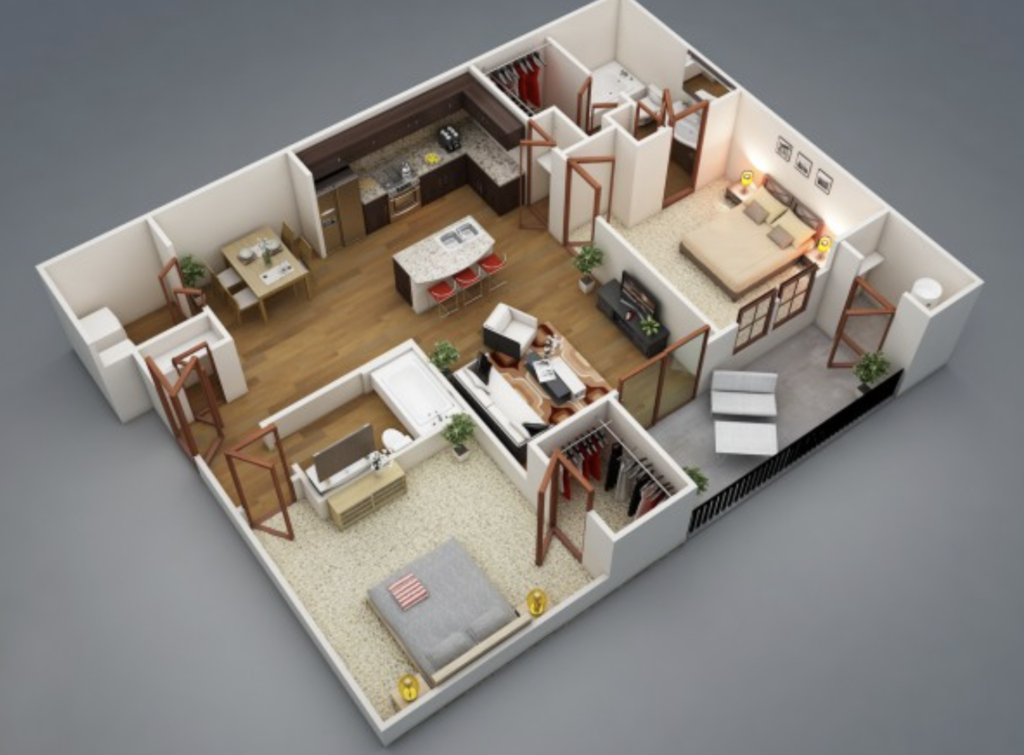
0.5B
當你在美國租房時,有可能會看到有些公寓的描述是1B1.5B、2B2.5B、2B1.5B等等。這個”0.5B”實際上是指一個半浴室(Half Bathroom)。
半浴室,通常只包含洗手台和馬桶,但不包括淋浴或浴缸。它的主要功能是方便日常的衛生需求,比如洗手、化妝或者使用馬桶,但不用於全身沐浴。在有些房型中,半浴室可能設在公共區域(如客廳)附近,以方便客人使用。
有半浴室的公寓或房子對於多人共住的情況來說,非常方便。當主浴室正在被使用時,其他人仍然可以使用半浴室進行日常的衛生需求。這樣可以在一定程度上減少生活中的不便,並提高了公寓的實用性。
Penthouse
有些人在租房時可能也會看到,Penthouse 一詞源自中古英語 pentis,原指依附在主要建築外牆的小斜屋頂或附屬建物。
20 世紀初,隨摩天大樓在紐約與芝加哥興起,開發商將最高樓層改裝為面向富裕客層的住宅,penthouse 便演變為「頂層豪宅」的代名詞。有些豪華大樓傾向「一層一戶」設計,以確保視野與隱私;但也有高樓層劃分多戶的「迷你 penthouse」版本,價格更易入手(一些)。
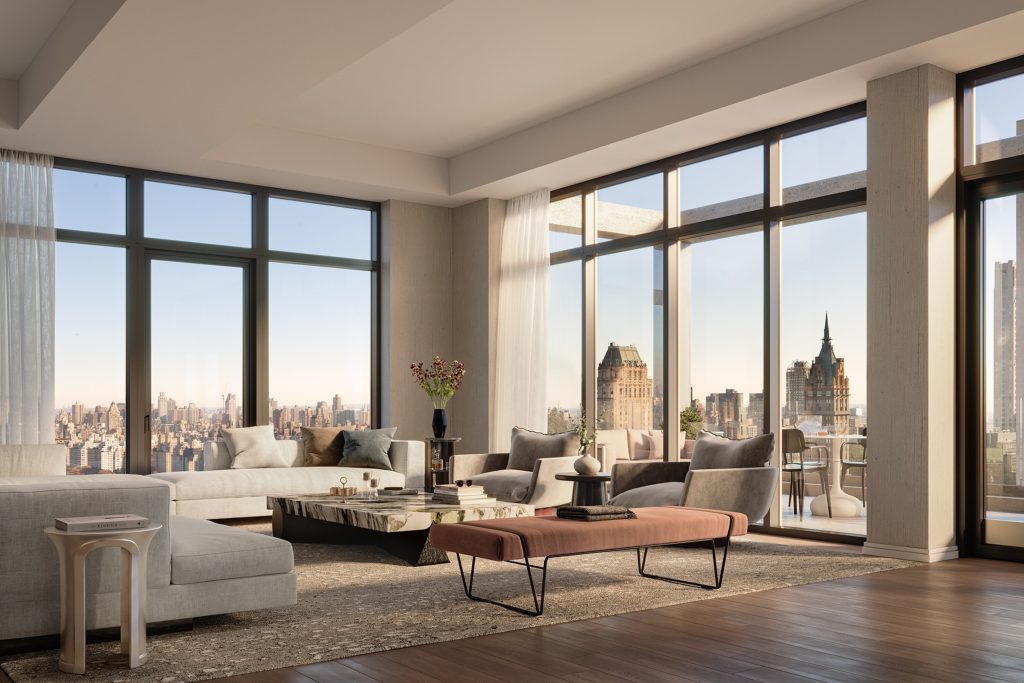
宿舍房型
一般學校的宿舍,也會有Studio、1B1B的房型,適合想自己住的同學。若有其他如廁所、廚房是跟他人共用的,則有其他更多不一樣的說法!
Suite
Suite 在學生宿舍中,通常包含多個單獨的臥室,這些臥室共享一個或多個浴室,以及一個共享的生活區或者小型廚房。
至於 Suite 裡面有幾間臥室、幾間浴室、每個臥室有幾個人住(可能一個或多個),取決於學校具體的安排。
以下是一個典型的”Suite”宿舍的例子:
當你打開門進入一個”Suite”,你可能首先會看到一個公共的生活區,這裡可能有一些座椅、書桌,甚至可能有一個小廚房(包含微波爐、冰箱等設施)供所有室友共享使用,以及一個或多個大家共用的廁所。
從這個公共區域,會有幾扇門通向單獨的臥室。每個臥室可能有一個或多個床位,以及學生個人使用的書桌和衣櫃等儲物空間。這些臥室會有足夠的隱私,讓學生可以安靜地學習或休息。
這種”Suite”的宿舍配置在大學中相當常見,特別是對於高年級學生或研究生,這種設計結合了私人空間和公共空間的優點,讓學生能在與同學交流與享受私人時間之間找到平衡。
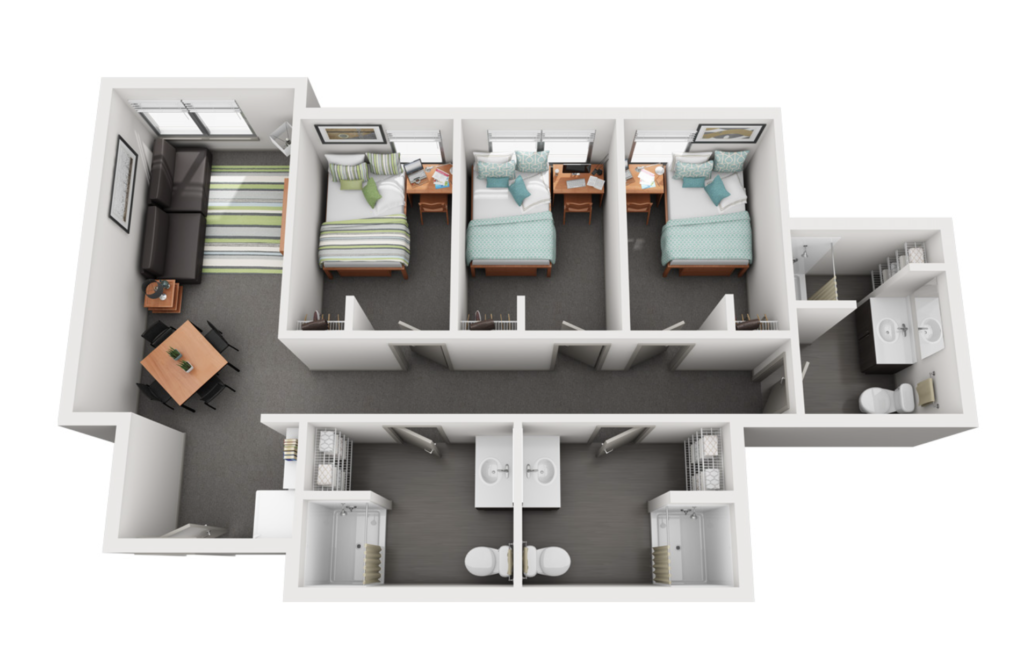
Single
在美國的宿舍中,”Single”通常是指一個學生使用、只有一個床位的宿舍房間。這個房間會有一張床、一張書桌、一個衣櫃或其他儲物設施,通常沒有自己的浴室,也可能有(可能標成Single w/ Bath)。
“Single”和”Suite”之間的主要區別:
室友和隱私:”Single”的房間都是單人房,因此它提供了最大的隱私。你不需要與任何人共享你的房間,你可以完全按照自己的時間表生活,無需擔心打擾到室友。
共享空間:在一個”Suite”中,你可能會與幾個室友共享一個生活區和浴室。這個共享的生活區可以是一個社交的場所,讓你與室友互動。而在”Single”宿舍中,除了可能需要共享浴室(通常會設計成整層樓共享幾間浴室,會有專員打掃),你基本上不需要與其他人共享空間。
“Single”和”Suite”都提供了一定的隱私,但他們在空間的共享程度、社交機會和價格上都存在一些差異。你可以根據學校詳細的情形、自己的需求和預算來決定哪種類型的宿舍最適合你。
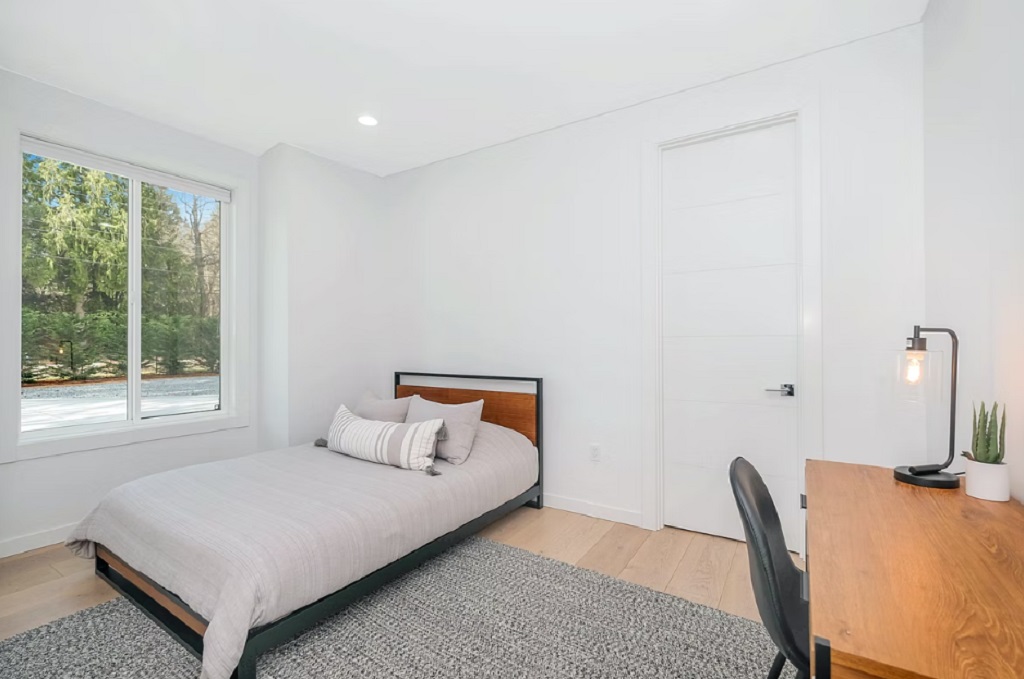
Two Bedroom Share
Two Bedroom Share 指的是一種住房配置,其中兩個臥室的住戶(兩個人或兩對人等)會共享「某些或全部」的公共空間,如廚房、浴室和客廳。也就是本來的2B2B房型(兩臥室兩浴室)或是2B1B房型(兩臥室一浴室)。
在這種配置中,每個租戶都有自己的私人空間(自己的臥室),這給予了他們一定程度的隱私。然而,他們也需要學習如何與室友共享公共空間,並確保這些區域保持整潔。
此外,這種概念也可以擴展到更多的臥室,例如 “Three Bedroom Share” 的配置。在這種配置下,三個臥室的租戶將共享一個或多個公共空間,但有沒有獨立的浴室、獨立的廚房等等,還是需要依據具體的房源配置。
Ensuite(較不常用)
這個詞源於法語,原意是”接連的”或”連續的”。在住宿中,”ensuite”通常用來描述一種佈局,即臥室與浴室之間沒有公共走廊或空間。
在宿舍看到”ensuite”這個詞,通常意味著會有自己的「私人浴室」,而不必與其他房客或室友共享。但這並不一定代表房間會有其他的設施,例如廚房或客廳,這些設施可能需要與其他房客或室友共享,或者可能根本就不包含。
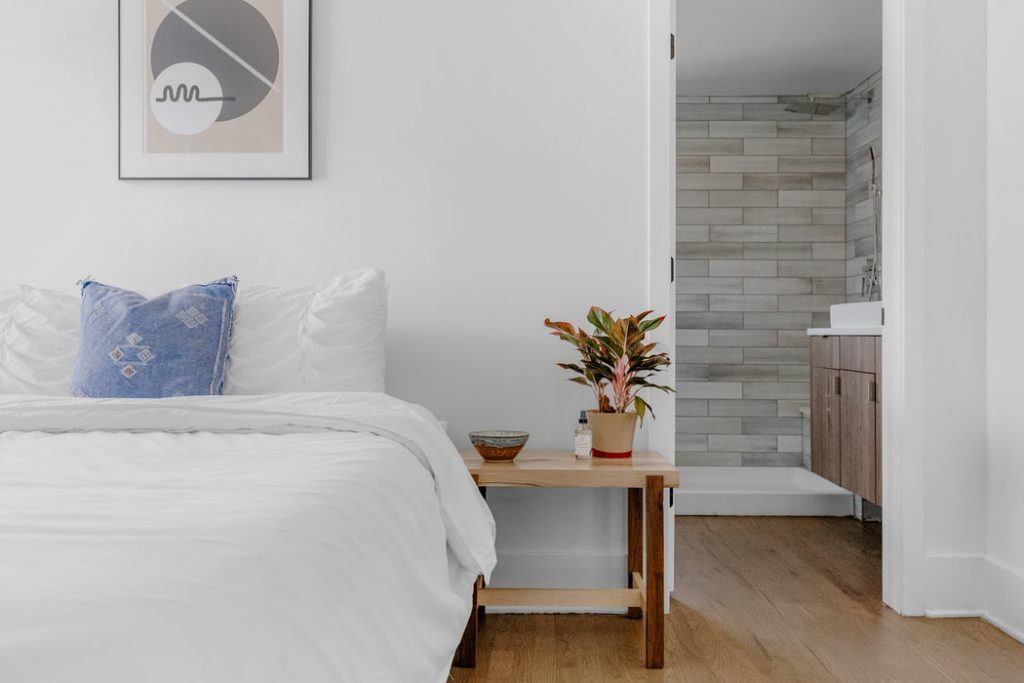
Efficiency(較不常用)
Efficiency 是一種將生活機能極度濃縮的套房形式,以「一人即可高效運用」為設計核心。通常代表一個有私人浴室的單人房間(所以總共會有床+書桌+浴室+衣櫃),還有一些簡便的廚具設施,如冰箱、微波爐(廚房完整度可能要視地方而定),不像 Studio 有客廳區域。
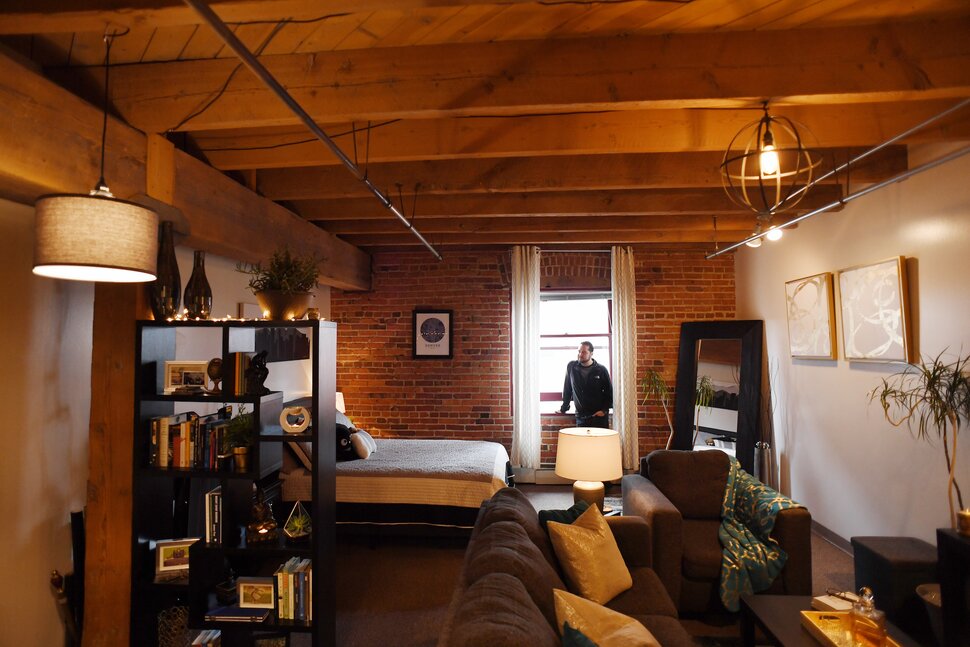
其他設施
W/D
W/D是 Washer/Dryer(洗衣機/烘衣機)的縮寫,當你在租屋或宿舍描述中看到”W/D”時,它表示該房間內配有洗衣機和烘衣機,沒有的話則會要到大樓公共的洗衣區來洗衣服。
這對許多租戶來說是一項非常吸引人的設施,因為它可以讓人們在自己的家中方便地清洗和烘乾衣物,而無需前往洗衣店或使用公共洗衣設施。
但請注意,即使有”W/D”的標記,也有可能是”washer/dryer hookups”,即提供了接駁洗衣機和烘乾機的設施,但並未實際提供這些機器本身。因此,如果這項設施對你來說非常重要,建議在租賃前明確詢問房東或物業管理方。
床的尺寸
單人床(Twin)
Twin Bed:標準單人床,尺寸是38英寸(寬)x 75英寸(長),換算成功公分為96.5cm(寬)x 190.5cm(長),這是最常見的孩童和學生宿舍床鋪尺寸。
Twin XL Bed:這種床的寬度與單人床相同,但長度更長,約80英寸,換算成公分約為96.5cm(寬)x 203cm(長)。這種尺寸的床在大學宿舍中非常常見,因為它可以容納更高的人。
加寬單人(Full)
Full Bed/Double Bed:這種床的尺寸是54英寸(寬)x 75英寸(長),換算成公分則約為137cm(寬)x 190.5cm(長)。比單人床寬,可供一個大人或兩個小孩使用。
“Full XL”(Full Extra Long):尺寸是54英寸(寬)x 80英寸(長),換算成公分則約為137cm(寬)x 203cm(長)。Full XL一個人躺著更為寬敞,也特別適合身高較高的人使用。因此,如果你是一個喜歡在床上攤開或者身高比較高的人,Full XL可能是一個非常好的選擇。
雙人床
Queen Bed:這種床的尺寸是60英寸(寬)x 80英寸(長),換算成公分則約為152.5cm(寬)x 203cm(長)。它比Full床大,可供兩個成人舒適地使用。
King Bed:這種床的尺寸是76英寸(寬)x 80英寸(長),換算成公分則約為193cm(寬)x 203cm(長)。這是最大的標準床尺寸,提供了極大的空間。
California King Bed:這種床的尺寸是72英寸(寬)x 84英寸(長),換算成公分為183cm(寬)x 213.5cm(長)。雖然它比標準的King床狹窄,但它比King床更長,對於特別高的人來說,這種床是一個很好的選擇。
Sqft.
Sqft” 是 “square feet” 的縮寫,意為「平方英尺」。
乘以0.0929就等於幾平方米,乘以0.028就是幾坪。
200平方英尺 (sqft):
- 約18.58平方米
- 約5.62坪
500平方英尺 (sqft):
- 約46.45平方米
- 約14.05坪
1000平方英尺 (sqft):
- 約92.9平方米
- 約28.1坪
常用傢俱單字
- floor plan – 房間格局
- stainless steel appliances – 不銹鋼家電
- countertops – 檯面
- sundeck – 日光浴露台
- moving services – 搬家服務
- on-site laundry – 洗衣房
- 24/7 concierge – 24小時服務台
- wardrobe/closet /armoire – 衣櫥/壁櫥
- chest of drawers – 抽屜櫃
- stove – 爐灶
- refrigerator – 冰箱
- floor lamp – 落地燈
- microwave – 微波爐
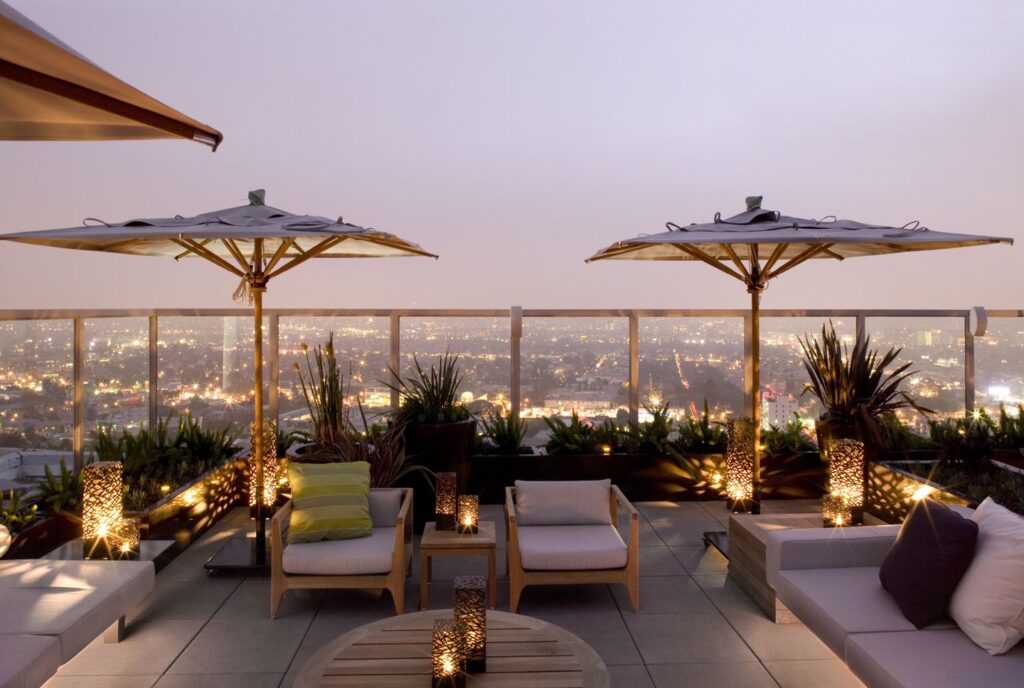
希望這篇文章有幫到你,也很歡迎分享文章!
延伸閱讀 >> RosyArts美國留學生活頁面
[美國購物] Rakuten 現金回饋教學,附新用戶$50美金(留學生實測心得&返利心法)
[Mint Mobile] 如何在台灣申請美國手機門號?美國電信 Mint Mobile eSIM 教學
Dcard 美國生活版:連結

